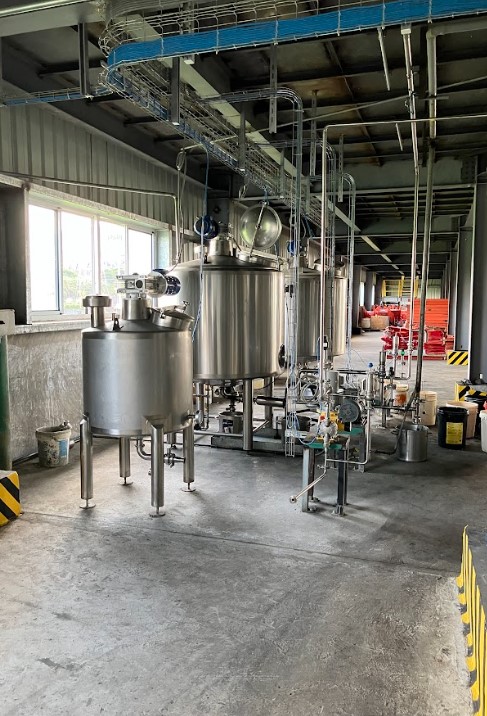Feed quality plays a crucial role in the success of livestock farming. High-quality feed is essential for ensuring that animals grow properly and maintain good health. In this discussion, we will explore two primary methods of processing feed: pellets and particles. Understanding these methods can help farmers make informed decisions that benefit their livestock and improve their feed mill project management.
Pellets and Particles: What’s the Difference?
Pellets are created by compressing feed into small, dense shapes that are uniform in size. This process helps to bind the ingredients together, making them easier for animals to consume. On the other hand, particles are produced by grinding feed into smaller, irregular pieces. This method retains the original structure of the ingredients but can lead to variations in size and texture.
Pellets: Pros and Cons
Good things about pellets:
- Nutrient Efficiency: Animals receive more nutrients from pellets because the compact shape allows for better digestion and absorption. This means that livestock can gain weight more effectively and maintain their health.
- Reduced Waste: With pellets, there is less feed waste. The dense form minimizes the chances of spillage and ensures that animals consume most of what is offered to them.
- Space-Saving: Pellets take up less space compared to loose feed. This is particularly beneficial for farms with limited storage capacity, as it allows for more efficient use of available space.
- Ease of Handling: Moving pellets around is generally easier than handling loose particles. They can be transported and stored more conveniently, which can save time and labor.
Not-so-good things about pellets:
- Energy Consumption: The process of making pellets requires more energy. This can lead to higher production costs, which may affect the overall profitability of the farm.
- Nutrient Loss: The heat generated during the pelleting process can damage some sensitive nutrients. This means that while pellets are efficient, they may not always provide the full nutritional value of the original ingredients.
- Dust Production: Pellets can create dust during handling, which can be a concern for both animal health and worker safety. Dust can irritate the respiratory system of both livestock and farm workers.
Particles: Pros and Cons
Good things about particles:
- Nutrient Preservation: Grinding feed into particles helps to keep nutrients intact. This method avoids the heat that can degrade certain vitamins and minerals, ensuring that animals receive the full benefits of their feed.
- Lower Energy Use: Producing particles generally requires less energy than making pellets. This can lead to cost savings in the long run, making it a more economical choice for some farms.
- Animal Preference: Many animals enjoy eating particles. The varied texture can make feeding time more appealing, encouraging better feed intake.
- Mixing Flexibility: Particles allow for easy mixing of different types of feed. This can help farmers create customized diets that meet the specific nutritional needs of their livestock.
Not-so-good things about particles:
- Nutrient Distribution: Nutrients may not mix evenly in particle form. This can lead to some animals receiving more nutrients than others, which can affect overall herd health.
- Selective Eating: Animals may pick out their favorite pieces, leading to imbalanced diets. This behavior can result in some nutrients being under-consumed.
- Storage Space: Particles take up more space than pellets. This can be a disadvantage for farms with limited storage options.
Choosing the Right Method
When deciding on the best way to process feed, consider the following factors:
- Nutritional Needs: Assess what your animals require for optimal growth and health.
- Available Ingredients: Take stock of the ingredients you have on hand and how they can be processed.
- Desired Feed Characteristics: Think about how you want the feed to look and feel.
- Farm Setup: Evaluate your farm’s layout and storage capabilities to determine the most practical option.
Tips for Better Feed Processing
To improve your feed processing methods, consider these tips:
- Ingredient Preparation: Ensure that all ingredients are prepared properly before processing.
- Control Conditions: Monitor factors like heat and pressure during processing to maintain quality.
- Quality Checks: Regularly check the quality of the feed to ensure it meets standards.
- Machine Maintenance: Keep processing equipment in good working order to avoid breakdowns.
- Worker Training: Provide regular training for workers to ensure they understand best practices.
New Ideas in Feed Processing
Innovations in feed processing are continually emerging. Some exciting developments include:
- Computer Control: Using computers to manage the processing can enhance precision and efficiency.
- New Pellet Techniques: Researchers are exploring alternative methods for creating pellets that may improve nutrient retention.
- Quality Sensors: Implementing sensors can help monitor feed quality in real-time, allowing for quick adjustments.
- Clean Energy Use: Exploring renewable energy sources, such as solar power, can make feed processing more sustainable.
Wrapping Up
Understanding how to process feed effectively is vital for any livestock farm. By learning about the differences between pellets and particles, farmers can make informed choices that benefit both their animals and their operations.
If you want to learn more about feed processing, feel free to reach out to our team. We are here to help you find the best methods for producing feed tailored to your farm’s needs.

